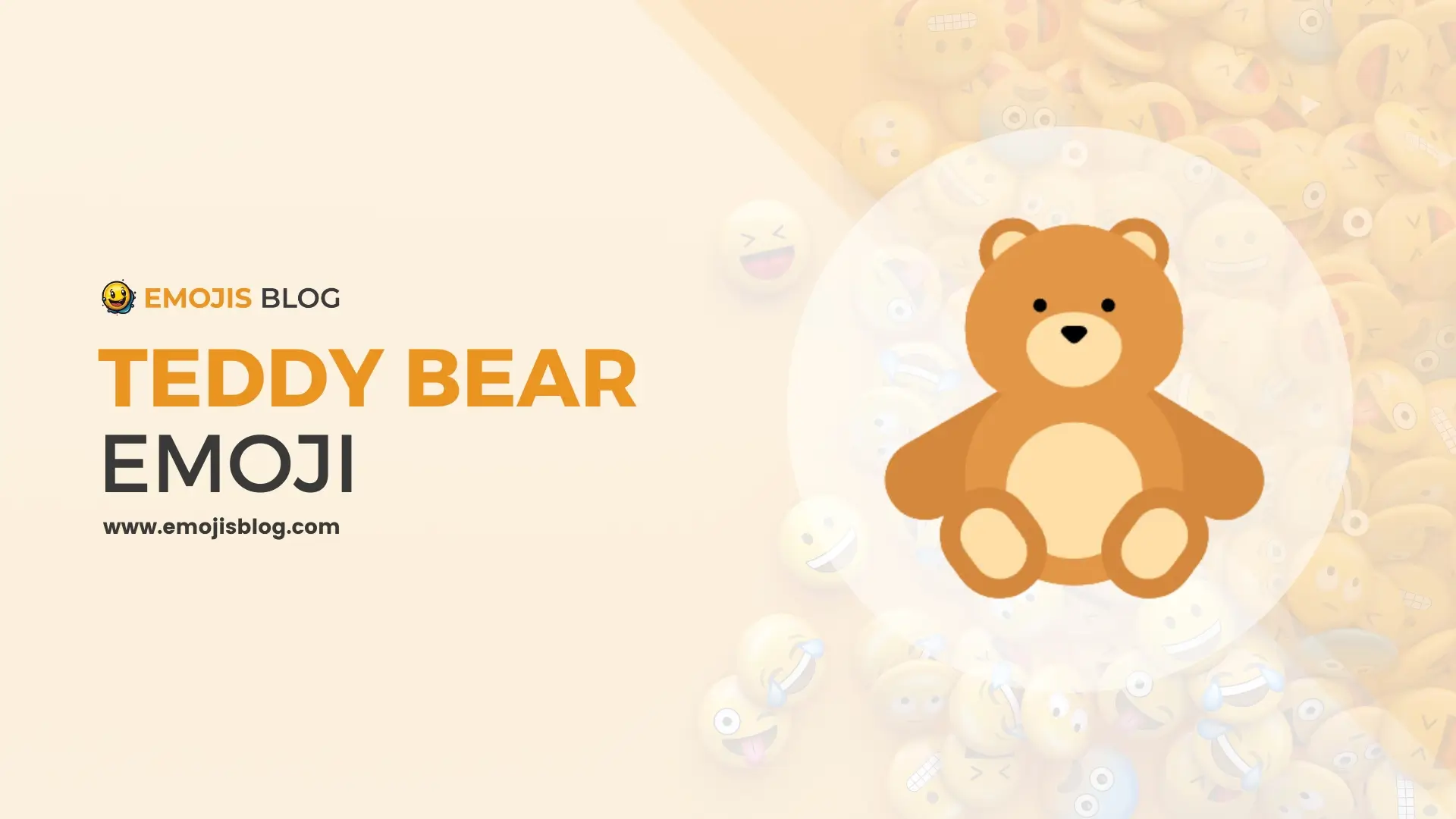What Does The Teddy Bear Emoji 🧸 Mean?
🧸
Teddy Bear Emoji 🧸 Meaning
The Teddy Bear emoji 🧸, introduced in Unicode 11.0 in 2018, is a digital symbol representing a classic, stuffed toy bear. Often used to convey feelings of warmth, affection, and comfort, it is a popular choice in messages seeking to provide emotional support or express care. Additionally, it evokes nostalgia and innocence, reminiscent of childhood memories. The emoji is versatile, also serving as a symbol for gifts in celebratory contexts like birthdays or Valentine’s Day. Its universal appeal and endearing design have made it a beloved icon in digital communication, transcending cultural and age barriers.
Technical Information
| Attribute | Details |
|---|---|
| Emoji | 🧸 |
| Unicode Version | Unicode 11.0 |
| Emoji Version | Emoji 11.0 |
| Character | U+1F9F8 |
| Category | Objects |
| Subcategory | Toy |
| Introduced in | 2018 |
| Description | Represents a classic, stuffed toy bear. |
| Platforms | Available across most platforms with varying designs |
| Keywords | Teddy bear, toy, plush, stuffed animal |
Understanding the Teddy Bear Emoji: 🧸
In the digital age, emojis have become a universal language, transcending cultural and linguistic barriers. Among these, the Teddy Bear emoji 🧸 holds a special place in our digital communications. This article delves into the meaning and usage of the Teddy Bear emoji, exploring its significance in various contexts.
Origin and Design
Historical Background
The Teddy Bear emoji was introduced as part of Unicode 11.0 in 2018 and later added to Emoji 11.0. Its design typically features a classic teddy bear, a stuffed toy bear, in a seated position. The color and specific style can vary across different platforms.
Symbolic Representation
Historically, the teddy bear is a symbol of comfort and childhood innocence. It is named after President Theodore “Teddy” Roosevelt, following an incident on a bear hunting trip in 1902. This association with a historical figure adds a layer of cultural significance to the emoji.
Interpretations and Uses
Expressing Affection and Comfort
One of the primary uses of the Teddy Bear emoji is to convey feelings of warmth, affection, and comfort. It’s often sent to show care and emotional support, especially in times of distress or sadness.
Childhood and Nostalgia
The emoji can also evoke feelings of nostalgia, reminding recipients of their childhoods. It’s frequently used in conversations reminiscing about past experiences or discussing children and childhood.
Celebrations and Gifts
In the context of celebrations like birthdays or Valentine’s Day, the Teddy Bear emoji can represent a gift. It’s a digital stand-in for the physical act of giving a teddy bear, a common present on such occasions.
Miscellaneous Uses
Beyond these common interpretations, the emoji can be used creatively in various other contexts. For instance, it might appear in discussions about wildlife, in playful or humorous messages, or even in fashion-related topics, particularly when discussing children’s clothing or toys.
Cultural Impact
Global Appeal
The Teddy Bear emoji has a universal appeal, cutting across age groups and cultures. Its meaning is generally consistent worldwide, making it a versatile tool in global digital communication.
Inclusion in Popular Culture
The emoji has found its way into popular culture, appearing in social media posts, digital art, and even in marketing campaigns. Its cute and endearing design makes it a popular choice for conveying positive emotions.
Conclusion
The Teddy Bear emoji 🧸 is more than just a digital icon; it’s a symbol of affection, comfort, and childhood memories. Its versatility in expressing a range of emotions and ideas makes it a beloved addition to our emoji lexicon. Whether used to offer comfort, celebrate a special occasion, or simply bring a smile to someone’s face, the Teddy Bear emoji holds a special place in our digital communications.

